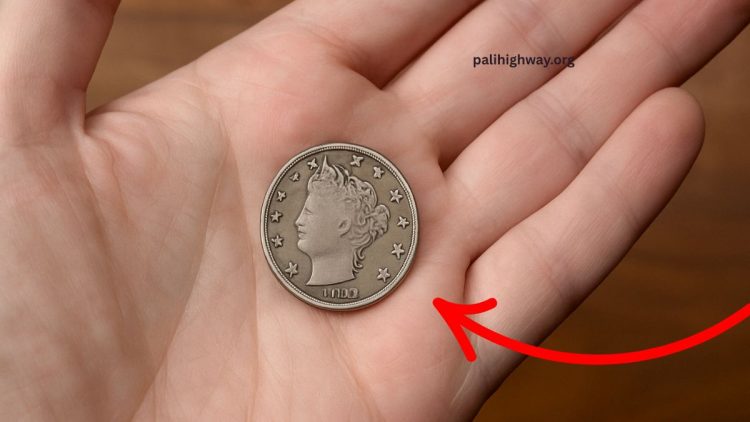Imagine discovering a coin in your pocket worth millions of dollars. While it may sound too good to be true, certain rare coins that are still in circulation are worth a fortune.
From minting errors to limited runs of unique designs, these coins have become some of the most sought-after collectibles in the world. Collectively valued at $72 million, these coins have sparked bidding wars and intense interest from numismatists and collectors alike.
In this article, we will explore the $72 million coins that are still in circulation, how you can identify them, and how to protect and sell these valuable pieces if you happen to own one.
What Makes a Coin Valuable?
The value of a rare coin is influenced by several factors:
- Rarity: Coins produced in limited quantities or with minting errors often carry high value.
- Condition: Coins in mint or uncirculated condition fetch higher prices than those with visible wear and tear.
- Historical Significance: Coins linked to significant historical events or periods increase in demand.
- Minting Errors: Mistakes during the production process, such as missing dates or double strikes, make coins valuable to collectors.
Top $72 Million Coins That Are Still in Circulation
Some coins that are still in circulation could be worth a fortune. Here’s a breakdown of the top rare coins that have fetched astonishing prices at auctions.
1. 1913 Liberty Head Nickel
- Value: Over $4 million
- Background: Only five of these nickels were minted, making them incredibly rare. The origin remains mysterious, and they have become a symbol of numismatic excellence.
- Key Features: Look for Liberty’s head on the obverse and a Roman numeral “V” on the reverse. Authenticity should be verified through trusted organizations like PCGS.
2. 2008 Undated 20p Coin (UK)
- Value: Up to $150
- Background: A minting error resulted in 250,000 coins being produced without a date, making them rare and highly collectible.
- Key Features: Look for a missing date on both sides of the coin. Despite being a modern issue, these coins are highly sought after.
3. 1976 Bicentennial Double-Strike Quarter
- Value: Up to $6,000
- Background: A double strike error caused overlapping designs on the Bicentennial quarter, making them stand out.
- Key Features: Examine the drummer boy design for double images. Minting errors like this can drive high prices.
4. 1943 Copper Penny
- Value: Up to $1.7 million
- Background: Most 1943 pennies were minted from steel, but a few were accidentally struck from copper. These copper pennies are among the rarest in the world.
- Key Features: Test the coin with a magnet; steel pennies will stick, but copper ones will not. If you find a copper 1943 penny, it could be worth a fortune.
5. 2004 Wisconsin Extra Leaf Quarter
- Value: Up to $7,000
- Background: The 2004 Wisconsin quarter was struck with an extra leaf on the corn design due to a minting error.
- Key Features: Look for an extra leaf above the ear of corn on the reverse side of the coin.
How to Spot Valuable Coins in Your Collection
If you suspect you may have a valuable coin, here’s how to identify them:
- Look for Minting Errors: Errors like double strikes, missing dates, and off-center designs are common traits of valuable coins.
- Check the Date and Year: Some coins, like the 1913 Liberty Head Nickel and 1943 copper pennies, are valuable due to their rarity in specific years. Research key years for different coin types.
- Assess the Condition: Coins in excellent condition are worth more. Use magnification tools to check for wear or damage. Higher grades often result in higher value.
- Check the Mint Mark: Coins with mint marks such as “CC” (Carson City) or “D” for Denver often carry a premium because of their rarity.
- Verify the Composition: Some coins like the 1943 copper penny have unusual compositions, making them valuable. Weighing the coin or consulting an expert can help determine its worth.
How to Protect and Store Your Coins
Proper storage is crucial for preserving a coin’s value. Here are some tips to keep your rare coins in top condition:
- Use Protective Cases: Store valuable coins in individual holders or capsules to prevent damage.
- Avoid Cleaning: Never clean your coins as it can reduce their value. The natural patina is often considered part of their charm.
- Control the Environment: Store coins in a cool, dry place to prevent tarnishing and corrosion. Humidity and temperature fluctuations can cause irreversible damage.
Where to Sell Rare Coins
If you have a rare coin, consider the following options for selling:
- Auction Houses: Websites like Heritage Auctions specialize in rare coins, attracting serious collectors.
- Coin Dealers: Reputable coin shops or local numismatists can appraise and purchase your coins. Ensure the dealer is recognized by organizations like the American Numismatic Association (ANA).
- Online Marketplaces: Platforms like eBay allow for buying and selling rare coins. However, ensure you have proper documentation to verify the coin’s authenticity and value.
Rare coins still in circulation represent a hidden treasure trove waiting to be discovered. Whether you have a 1913 Liberty Head Nickel, a 1943 copper penny, or a 2004 Wisconsin Extra Leaf Quarter, these coins could be worth thousands—or even millions.
By learning how to identify valuable coins, preserving them properly, and knowing where to sell them, you can unlock their true potential and perhaps turn your spare change into a fortune.
FAQs
How can I identify valuable coins?
Look for minting errors, check the year and date, and assess the coin’s condition for wear and damage.
What is the most valuable coin still in circulation?
The 1913 Liberty Head Nickel, valued at over $4 million, is among the most valuable coins still in circulation.
Where can I sell rare coins?
You can sell rare coins at auction houses, through coin dealers, or on online marketplaces like eBay.

